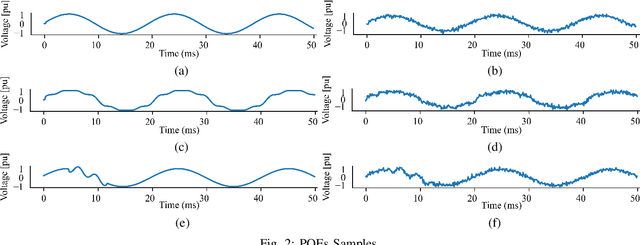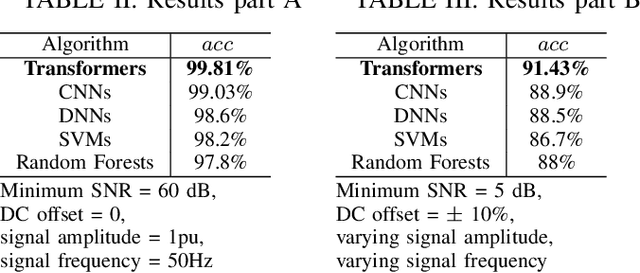Davor Svetinovic
PCA-Guided Autoencoding for Structured Dimensionality Reduction in Active Infrared Thermography
Aug 11, 2025Abstract:Active Infrared thermography (AIRT) is a widely adopted non-destructive testing (NDT) technique for detecting subsurface anomalies in industrial components. Due to the high dimensionality of AIRT data, current approaches employ non-linear autoencoders (AEs) for dimensionality reduction. However, the latent space learned by AIRT AEs lacks structure, limiting their effectiveness in downstream defect characterization tasks. To address this limitation, this paper proposes a principal component analysis guided (PCA-guided) autoencoding framework for structured dimensionality reduction to capture intricate, non-linear features in thermographic signals while enforcing a structured latent space. A novel loss function, PCA distillation loss, is introduced to guide AIRT AEs to align the latent representation with structured PCA components while capturing the intricate, non-linear patterns in thermographic signals. To evaluate the utility of the learned, structured latent space, we propose a neural network-based evaluation metric that assesses its suitability for defect characterization. Experimental results show that the proposed PCA-guided AE outperforms state-of-the-art dimensionality reduction methods on PVC, CFRP, and PLA samples in terms of contrast, signal-to-noise ratio (SNR), and neural network-based metrics.
Large Language Model-Based Framework for Explainable Cyberattack Detection in Automatic Generation Control Systems
Jul 29, 2025Abstract:The increasing digitization of smart grids has improved operational efficiency but also introduced new cybersecurity vulnerabilities, such as False Data Injection Attacks (FDIAs) targeting Automatic Generation Control (AGC) systems. While machine learning (ML) and deep learning (DL) models have shown promise in detecting such attacks, their opaque decision-making limits operator trust and real-world applicability. This paper proposes a hybrid framework that integrates lightweight ML-based attack detection with natural language explanations generated by Large Language Models (LLMs). Classifiers such as LightGBM achieve up to 95.13% attack detection accuracy with only 0.004 s inference latency. Upon detecting a cyberattack, the system invokes LLMs, including GPT-3.5 Turbo, GPT-4 Turbo, and GPT-4o mini, to generate human-readable explanation of the event. Evaluated on 100 test samples, GPT-4o mini with 20-shot prompting achieved 93% accuracy in identifying the attack target, a mean absolute error of 0.075 pu in estimating attack magnitude, and 2.19 seconds mean absolute error (MAE) in estimating attack onset. These results demonstrate that the proposed framework effectively balances real-time detection with interpretable, high-fidelity explanations, addressing a critical need for actionable AI in smart grid cybersecurity.
Multi-Modal Attention Networks for Enhanced Segmentation and Depth Estimation of Subsurface Defects in Pulse Thermography
Jan 17, 2025



Abstract:AI-driven pulse thermography (PT) has become a crucial tool in non-destructive testing (NDT), enabling automatic detection of hidden anomalies in various industrial components. Current state-of-the-art techniques feed segmentation and depth estimation networks compressed PT sequences using either Principal Component Analysis (PCA) or Thermographic Signal Reconstruction (TSR). However, treating these two modalities independently constrains the performance of PT inspection models as these representations possess complementary semantic features. To address this limitation, this work proposes PT-Fusion, a multi-modal attention-based fusion network that fuses both PCA and TSR modalities for defect segmentation and depth estimation of subsurface defects in PT setups. PT-Fusion introduces novel feature fusion modules, Encoder Attention Fusion Gate (EAFG) and Attention Enhanced Decoding Block (AEDB), to fuse PCA and TSR features for enhanced segmentation and depth estimation of subsurface defects. In addition, a novel data augmentation technique is proposed based on random data sampling from thermographic sequences to alleviate the scarcity of PT datasets. The proposed method is benchmarked against state-of-the-art PT inspection models, including U-Net, attention U-Net, and 3D-CNN on the Universit\'e Laval IRT-PVC dataset. The results demonstrate that PT-Fusion outperforms the aforementioned models in defect segmentation and depth estimation accuracies with a margin of 10%.
Unmasking Covert Intrusions: Detection of Fault-Masking Cyberattacks on Differential Protection Systems
Sep 06, 2024



Abstract:Line Current Differential Relays (LCDRs) are high-speed relays progressively used to protect critical transmission lines. However, LCDRs are vulnerable to cyberattacks. Fault-Masking Attacks (FMAs) are stealthy cyberattacks performed by manipulating the remote measurements of the targeted LCDR to disguise faults on the protected line. Hence, they remain undetected by this LCDR. In this paper, we propose a two-module framework to detect FMAs. The first module is a Mismatch Index (MI) developed from the protected transmission line's equivalent physical model. The MI is triggered only if there is a significant mismatch in the LCDR's local and remote measurements while the LCDR itself is untriggered, which indicates an FMA. After the MI is triggered, the second module, a neural network-based classifier, promptly confirms that the triggering event is a physical fault that lies on the line protected by the LCDR before declaring the occurrence of an FMA. The proposed framework is tested using the IEEE 39-bus benchmark system. Our simulation results confirm that the proposed framework can accurately detect FMAs on LCDRs and is not affected by normal system disturbances, variations, or measurement noise. Our experimental results using OPAL-RT's real-time simulator confirm the proposed solution's real-time performance capability.
Enhancing Power Quality Event Classification with AI Transformer Models
Feb 22, 2024



Abstract:Recently, there has been a growing interest in utilizing machine learning for accurate classification of power quality events (PQEs). However, most of these studies are performed assuming an ideal situation, while in reality, we can have measurement noise, DC offset, and variations in the voltage signal's amplitude and frequency. Building on the prior PQE classification works using deep learning, this paper proposes a deep-learning framework that leverages attention-enabled Transformers as a tool to accurately classify PQEs under the aforementioned considerations. The proposed framework can operate directly on the voltage signals with no need for a separate feature extraction or calculation phase. Our results show that the proposed framework outperforms recently proposed learning-based techniques. It can accurately classify PQEs under the aforementioned conditions with an accuracy varying between 99.81%$-$91.43% depending on the signal-to-noise ratio, DC offsets, and variations in the signal amplitude and frequency.
 Add to Chrome
Add to Chrome Add to Firefox
Add to Firefox Add to Edge
Add to Edge